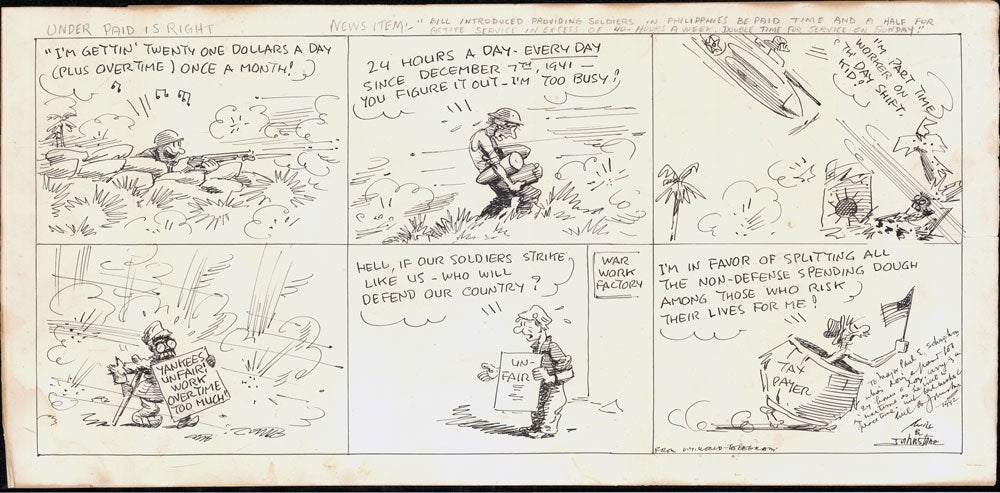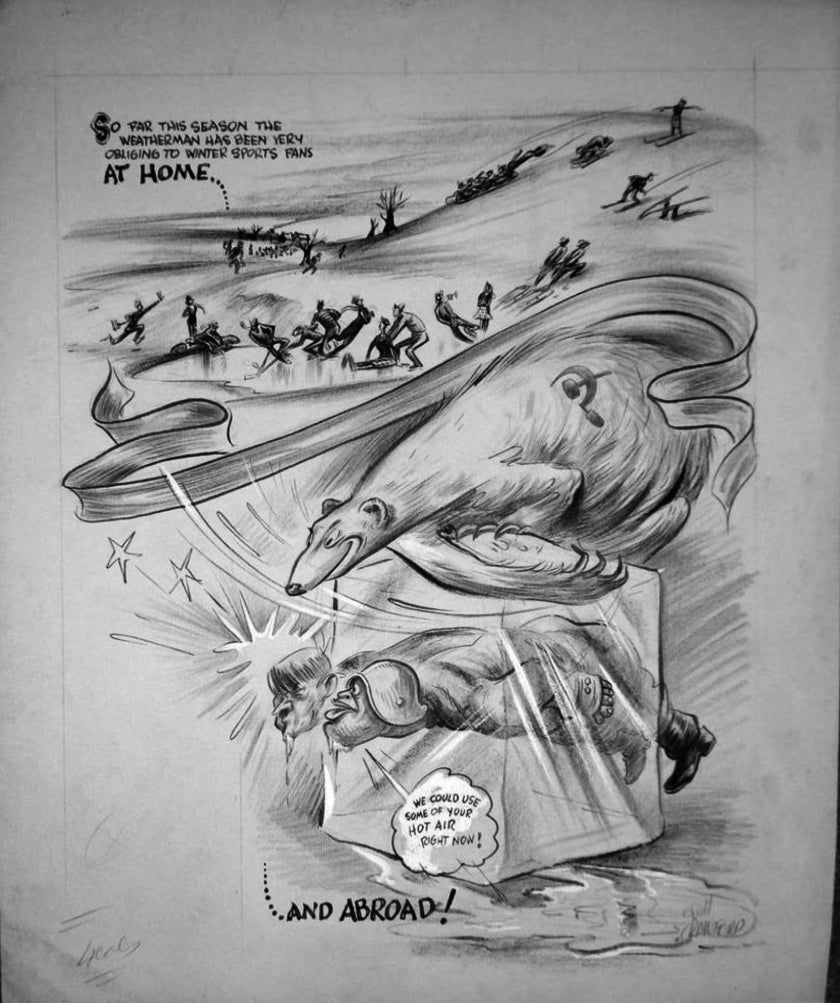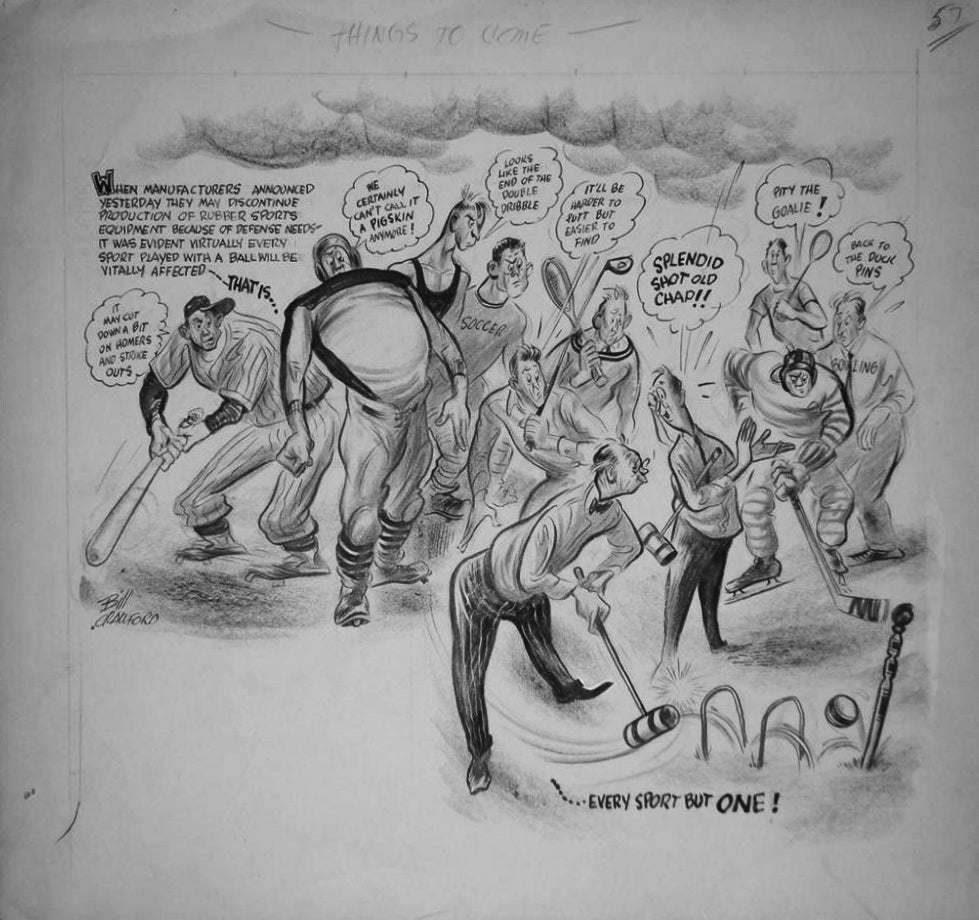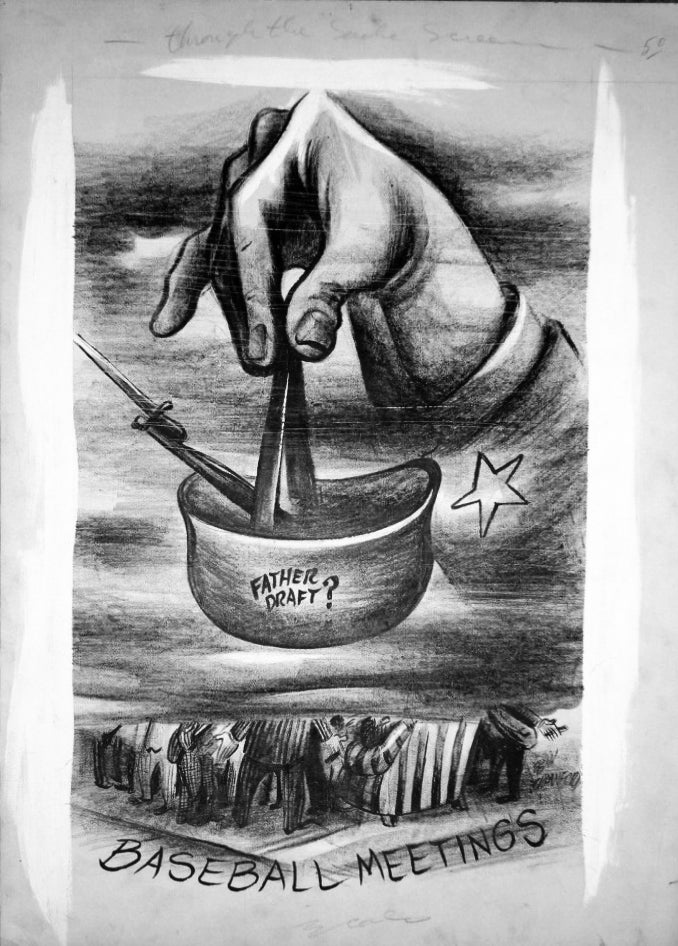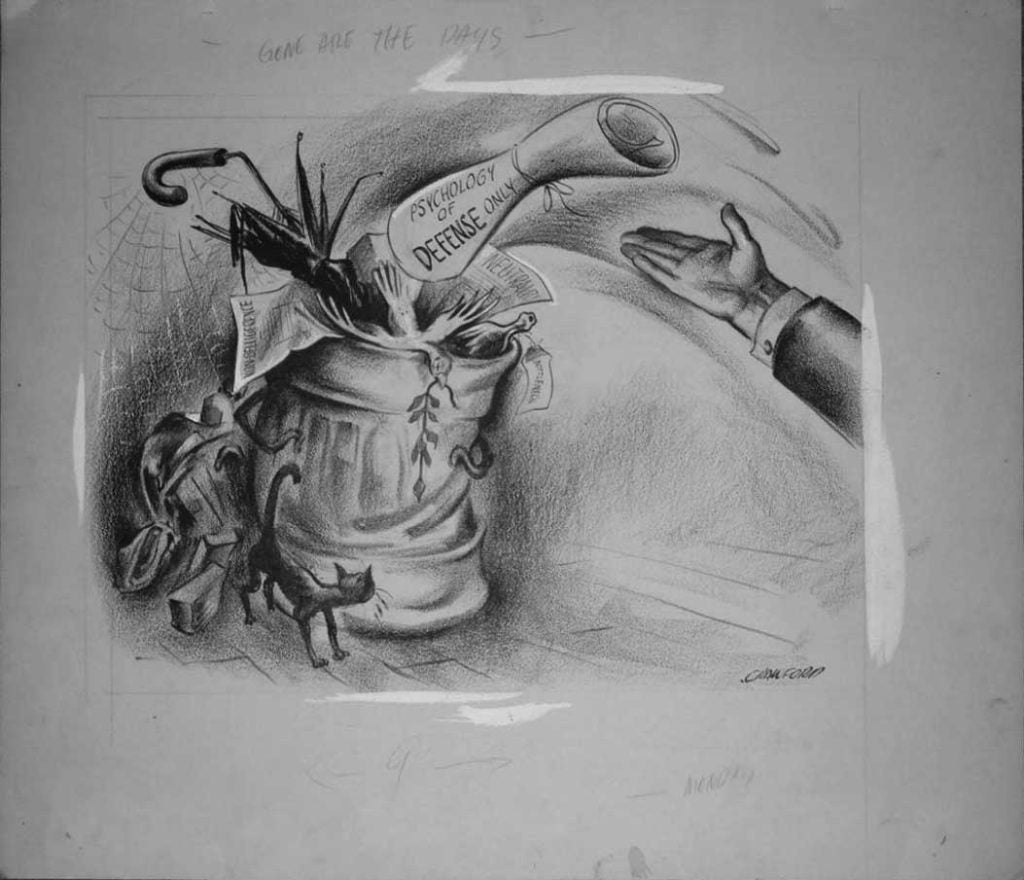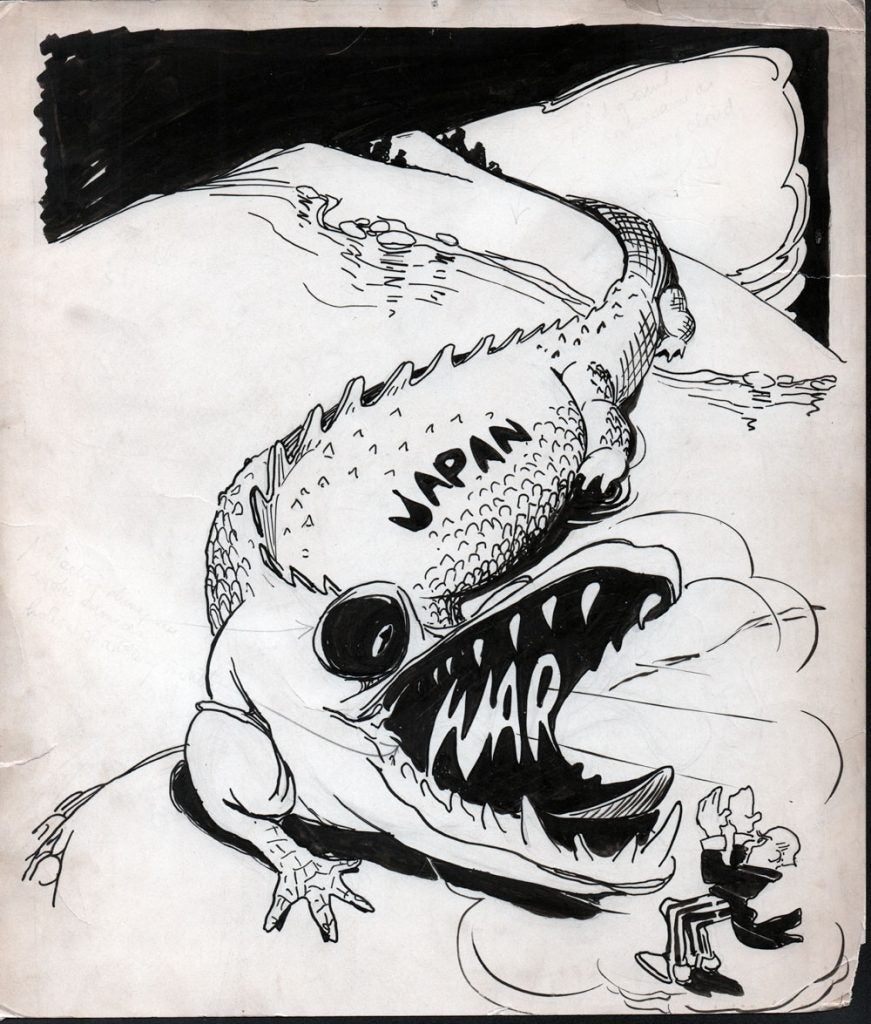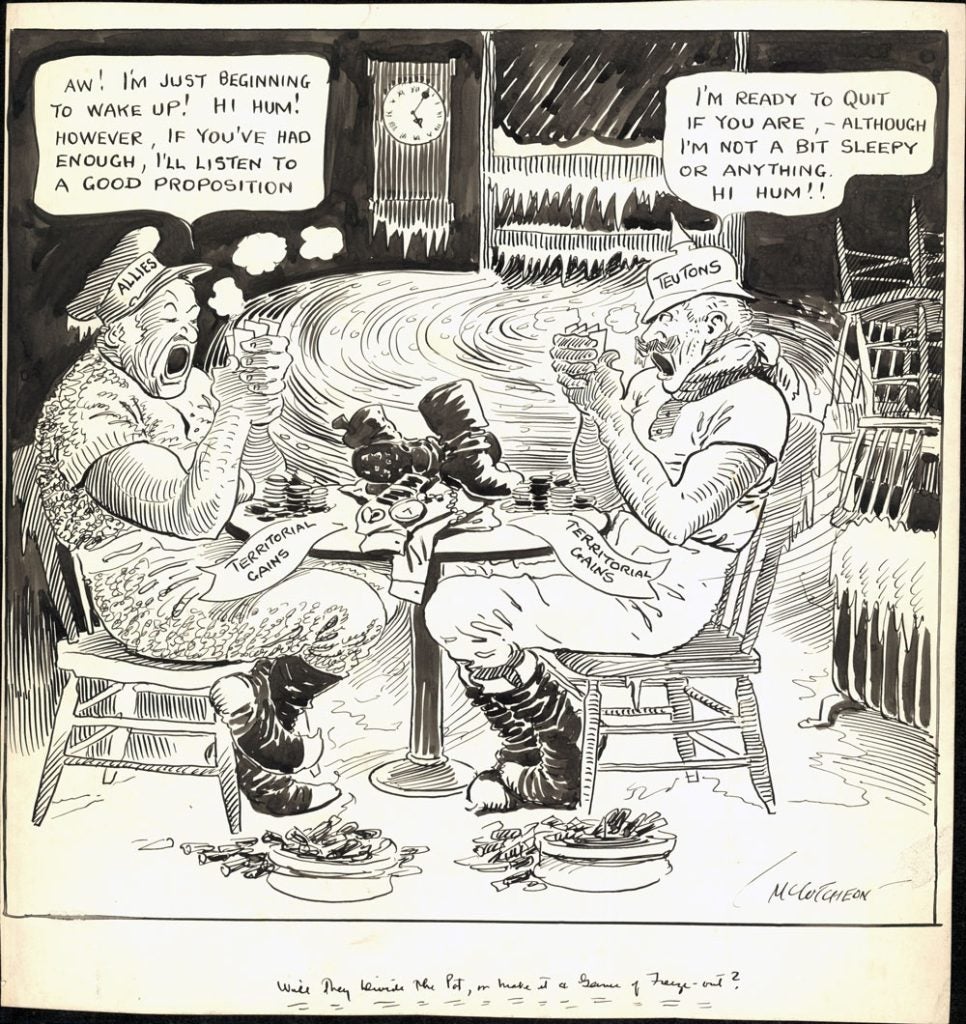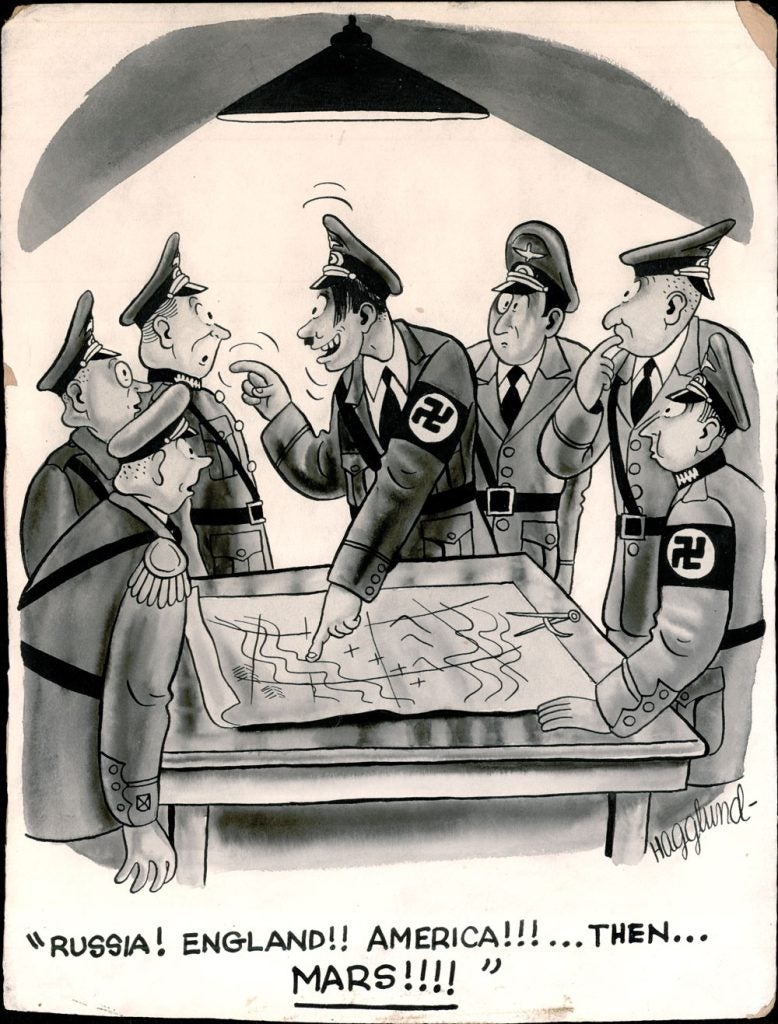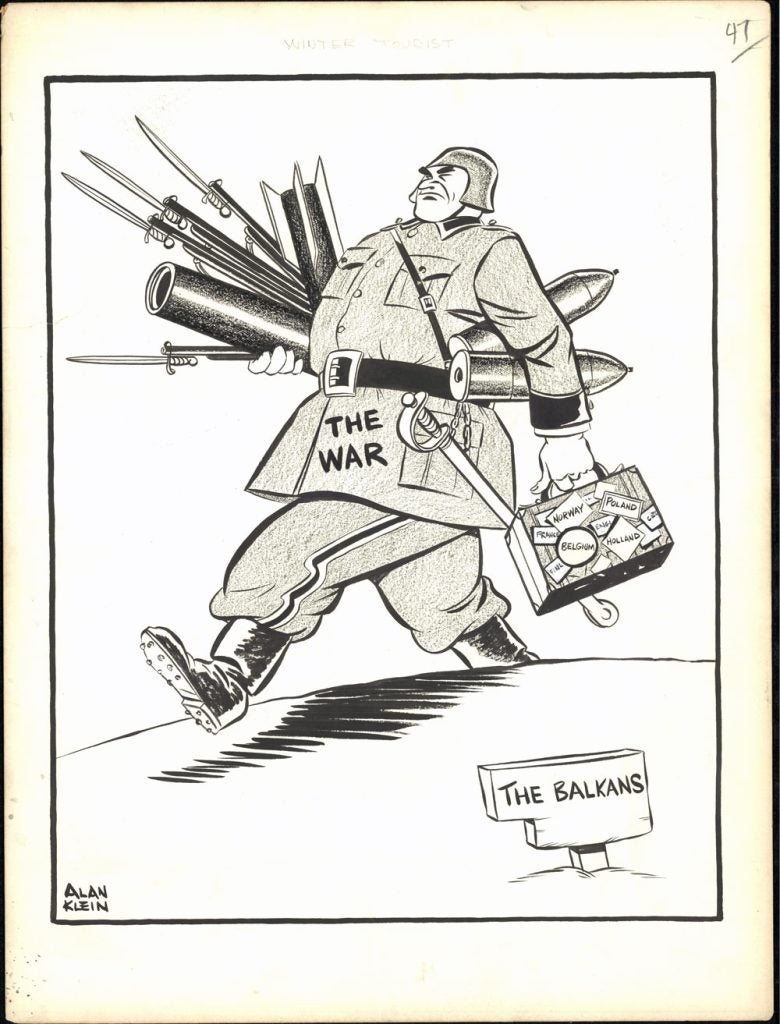Greetings.
Collecting original illustration art that has been published is a fun target. The art is truly one of a kind, and because it has generally been published is a low resolution form, actually forging an original is functionally impossible. A scanned and edited version is too perfect, and the randomness of ink lines means that reproducing even a fraction of a percent of them would be impossible, even if you were looking at the high resolution art. The originals are fixed, annotated, on old paper, have production stickers and notes, and so on. Everyone knows the published piece from its appearance on newsprint, so faking something is out of the question, too. It took a long time for illustration and comic book and comic strip art to be recognized for its unique character instead of being considered low brow.
As of 2022, editorial art has not quite caught up, but it has the same qualities. Newspapers are not as widely distributed as comic books, so familiarity with the published work is less common. But the inability to forge and fake certainly is. I personally like editorial art because it always speaks directly to the moment of its creation and not in retrospect.
With this site, I would like to reconstruct some of the historical highlights of World War II through a collection of editorial illustrations (hard to call them cartoons, actually), and filling in what I can about the backstories. When they are dated, it is generally quite easy to dig out the contexts. When they are not dated, I need to do a little detective work and inference building to figure the most likely referents. One thing about editorial art is that it is timely. So when you find the event being referenced, you can be pretty sure the art appeared within a day or so and not even a week later.


